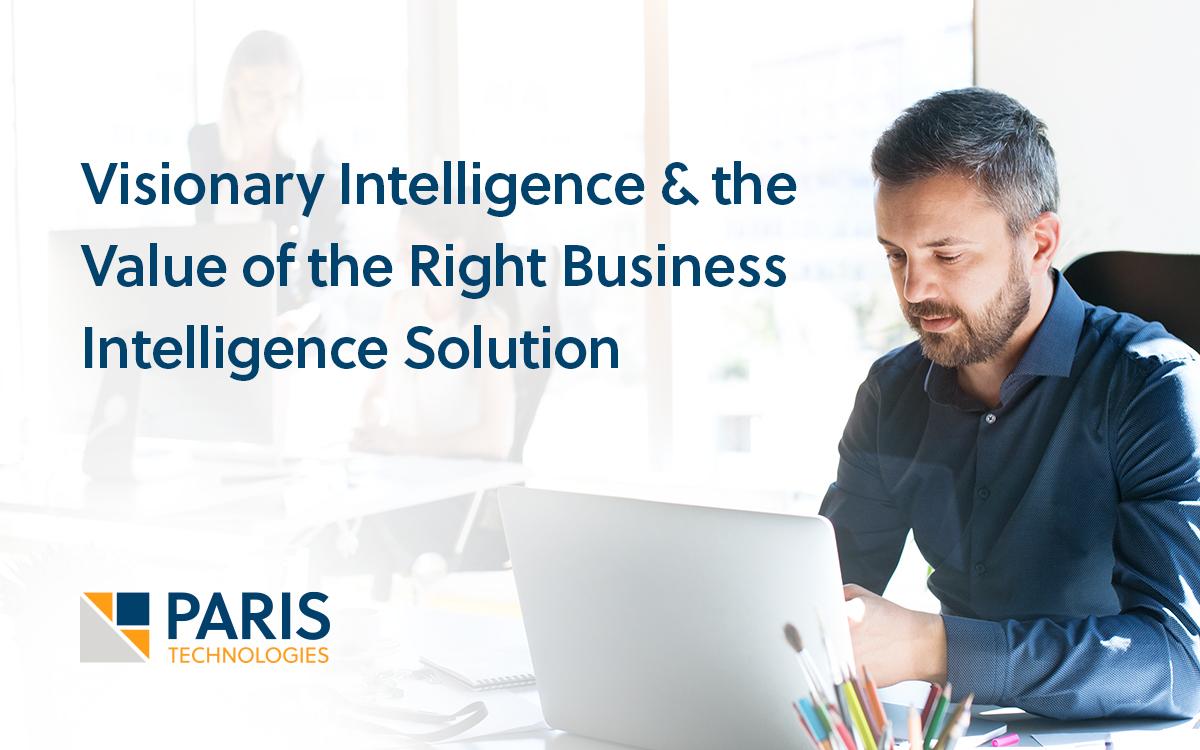
Business intelligence (BI) is the transformation of data into insights that drive business value; the revelation of trends that help executives and their teams make informed decisions, optimize processes, and overcome disruption. But this extremely broad definition seems to be what most BI technology solutions are working with, as many are not equipped with the tools professionals need to give leadership valuable, actionable information on the best path forward. Effective BI software provides innovative new methods of working with data in comparison to the cumbersome tools of the past, providing more accurate results, more effective management of large amounts of data, and improved ergonomics in terms of using the actual software. It allows those in finance, sales, marketing, and other company departments to strategize and make decisions on a higher level than before, along with resultant improved job satisfaction. But what exactly does this look like?
Review the common capabilities of top BI software to ensure you’re working with the right solution, and learn how high-performing teams extend BI value by adding Visionary Intelligence into the mix.
Finding the Best BI Software
In the digital age, companies of all sizes need to embrace BI to stay afloat. Software like Tableau, Microsoft Power BI, and Qlik make it appear easy to draw smart conclusions from a large volume of reference data. So why is senior management often frustrated, unable to obtain the guidance they deserve and need from these solutions to steer their department? Are they simply using them wrong? Well, yes and no.
Most information that reaches management is filtered through the lens of several end-user tools that don’t complement one another. The ideal BI solution is made up of technology that works well together, integrates easily with all tools in use, connects easily to retrieve transactional data from other business systems, updates all tools if one change is made, and ultimately provides not just visual data representations but real contextual business takeaways. This means that one or more tech tools in an organization’s complete BI solution contains embedded, suggestive intelligence and is capable of cognitive computing so teams can utilize a continuous improvement feedback loop.
The best BI solutions on the market for companies that are serious about making accurate, data-driven decisions across departments should help executives and employees achieve several high-level objectives.
- Highlight instances of major or recurring revenue loss
- Find opportunities to save money or increase profits
- Identify areas of improvement for core business processes
- Pinpoint top-performing offerings to adjust sales strategies
- Analyze customer behavior to optimize customer service
- Measure team productivity to boost performance
But even the most well-equipped BI tools still make up only one type of tool in the modern organization’s growth guidance toolbox. The missing piece is Visionary Intelligence.
Combining Business Intelligence with Visionary Intelligence
BI offers great ROI and can result in dramatic increases in enterprise-wide performance when done right—and when combined with Visionary Intelligence. BI uses backward-looking, historical, up-to-the-minute data, most often to visualize information for decision-making. Visionary Intelligence, on the other hand, blends historical data with forward-looking, future data through predictive analytics that power real-time planning and forecasting.
Think of these concepts as two helpful halves of a more complete, effective whole. With business intelligence, you collect data for the software to reveal what happened and format it in visual ways to find out why. Then you can move on to Visionary Intelligence, where the software takes that information to predict what’s next and you discover how to act on the future outcomes that your team aims to benefit from.
What Happened? Why? What’s Next? How to Act…
Introducing Visionary Intelligence into everyday decision-making processes is how leading companies in all industries extend the value of BI tools. Their people are able to set realistic expectations for the business, make educated judgments on upcoming change, prepare tactics to proactively address likely scenarios, and remain agile to navigate whatever comes their way. Together, BI and Visionary Intelligence create a data-driven system for business modeling, analytics, forecasting, reporting, and planning. Executives and employees are never left in the dark, surprised at new numbers and scrambling to react to unexpected results. This supercharged forecasting ability helps in fast-paced environments where to-the-second decisions are necessary and late decisions can have harsh consequences. It gives a competitive edge to those who make the right decisions, which can be contributed to having the right information on hand at the right time.
Collaborating Instead of Co-Authoring
One of the biggest myths still permeating the BI space is that the right technology system will do all the work. It won’t. We need financial analysts and other skilled professionals to manipulate data and draw conclusions using their background in a company and experience in an industry. The right BI tool can only make this process simpler, and, due to more accurate inputs, provide more accurate results. So, while BI tools should possess impressive technical capabilities, they must also leave room for the human element when it comes time to make the most of findings, facilitating true collaboration rather than the simplistic co-authoring we see in many solutions today.
Collaboration starts with a guidance system—BI plus Visionary Intelligence—that centralizes data, formulas, and business rules and supports real-time, automated calculations. This ensures data consistency across all user experiences, whether dashboards, reports, or spreadsheets. In the age of remote work, teams need to remain connected through the cloud and lean on a single, integrated model for sharing information and fueling forecasts and plans. An update in one spreadsheet means an automatic update in all related spreadsheets. This cloud model concept is being rapidly adopted by organizations across the industry, from small businesses to large players. As the cloud object storage market continues to grow, its market value is expected to reach USD $6 billion by the end of 2023.
Developing a collaborative, cloud-based guidance system is possible with tools like PowerExcel, which transforms Microsoft Excel into a powerful decision-making solution with independent data and formulas for easy insight access, contribution, and sharing.
Learn more about PowerExcel and our mission to help organizations build comprehensive guidance systems.

